W
elcome to online, a huge party where you chat, make yourself visible, integrate within a group and manage to form your own gang. Sounds very natural and simple but the smallest fail like falling from stairs or a private picture of you that your friend shows to everyone can ruin this party for you. The same is with your online reputation that takes a lot to build and just some seconds to ruin.
To assure a clear understanding of your brand and also to win trust and devotion of your audience, your company needs to invest a good amount of time and effort. So reputation management is more of a triathlon than just a sprint. This long-term, complex process consists of building your company's name, maintaining it stable and recovering it in case of dramatic incidents. Knowing what to expect, now we can go in depth through this guide to online reputation.
- How to Build Your Online Reputation
- How to Maintain Your Online Reputation
- How to Recover Your Online Reputation
But first thing first...
What is online reputation management?
Online reputation management (ORM) is the process of monitoring the digital presence of a brand and influencing the audience’s opinion about it. So if your company is present in online it is very risky to not worry about its brand reputation in online. Ignoring it might affect directly or indirectly your revenue for a longer period of time. And rebuilding it is a much more difficult process but let’s not go so far yet.
Why reputation management is important?
Online reputation management is absolutely necessary in this era of digitalization in order to grow and control your brand image, to build a long term relationship with customers and to control the social approval of your product/service.
Brand is no longer what we tell the customers it is - it is what consumers tell each other it is.
Scott Cook, director of eBay and Procter & Gamble
You probably think "fewer of common known concepts and more practical steps, please".
How to Build Your Online Reputation
Like in triathlon, you start by diving into the online ecosystem and swimming through a lot of digital channels and types of content. What can you do build your brand image:
1. Social Media Presence
Your reputation is basically what people are saying about you. As a logical conclusion, in order to build your online presence, your first step is to let people interact with you the easiest way for them. So a profile on social media automatically announces your openness to the audience.
Besides your availability, your digital presence is also one more social proof filter.
Do not: There are so many social platforms on the internet and even if it seems very promising to make pages on all them, still be reasonable. You need to reach only your potential clients and there is no sense to make a snapshot account if you are a B2B company.
2. Run a High-Quality Blog
Be not just a product or a service for your target audience, be a friend who gives advice, a teacher who guides step by step, a talkative neighbor who tells you all the juicy news. Basically be someone people need day by day so they get attached to your brand. You can easily do this by starting a blog, friendly for both users and search engines, where you publish the engaging information your audience might need and look for within search results.
By the way, it’s a must to keep blog posting constantly and also to invest time and creativity in content creation. Make it as creative as possible: create infographics, animate your text by adding images, audio, video content. By starting a blog you officially promise your audience to have an effective communication strategy and stay close and help. Once you stop you will be replaced by other industry blogs.
Do not: Your blog is your voice so don’t use it to scream out loud about yourself, just whisper now and then about how can your product/service help. A content strategy would help you avoid this problem. Just look at the blog of Dollar Shave Club. Without its generic name you wouldn’t really guess what are they selling, and still, these articles attract the public and make people buy its health care products for men.
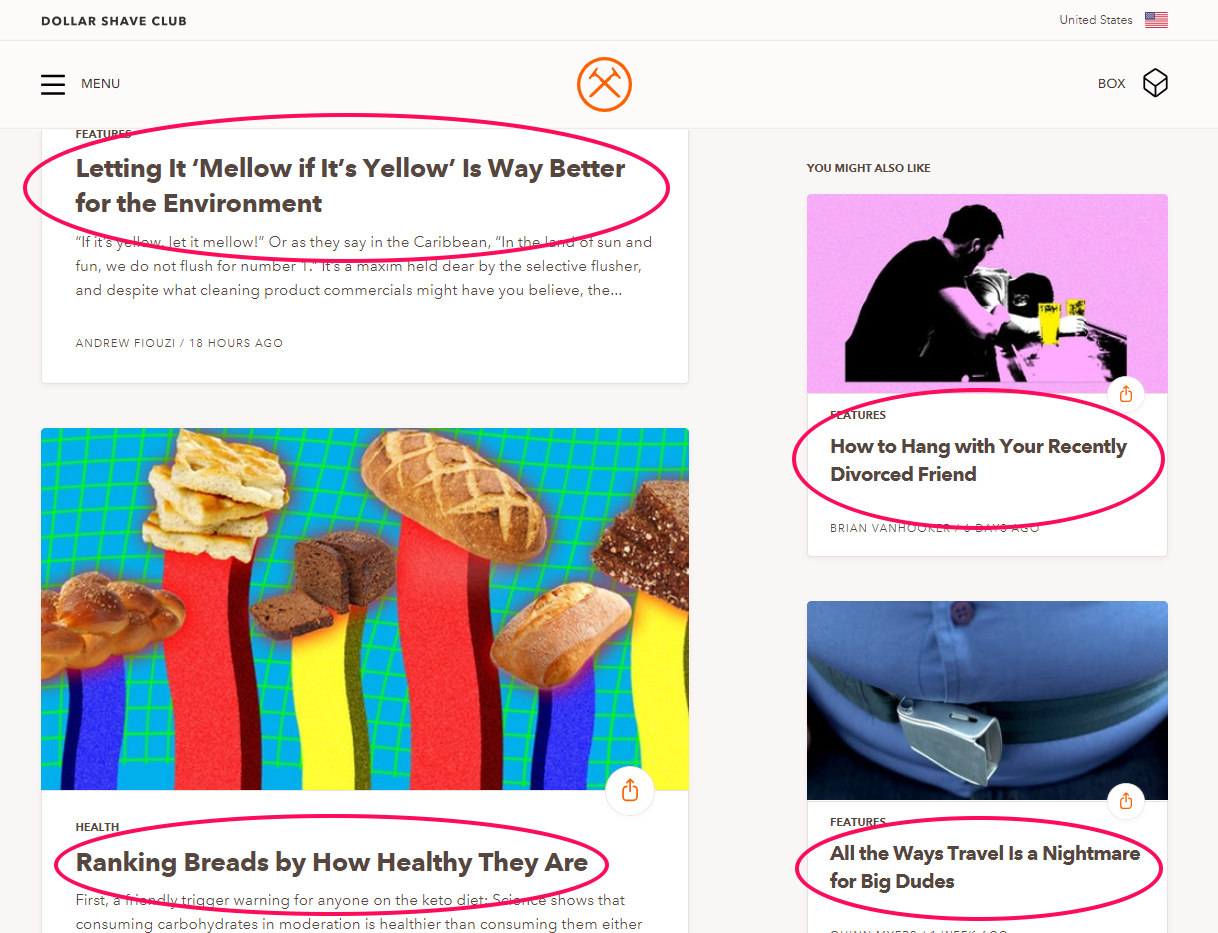
3. Reach to Your Influencers
Like coming into a party, make your friends introduce you to the new group. The same is in online, find the influencers (vloggers, experts in a niche, celebrities etc) whose followers are your main audience and ask them to talk about you. Be aware that this kind of collaboration is monetized but it can bring you, new customers. A research about influencer marketing and a little bit of creativity can raise your visibility. Start by learning how to reach them using this short guide.
Do Not: Influencers are not you sellers, don’t expect them to flatter you all the time, they still want to be authentic, they won't be fixing your online reputation. And even if you pay tons for it in crisis management situations, and the influencer accepts it, the audience still will feel and punish overpromotion.
4. Transparency Policy
As risky as it sounds, transparency is the best policy. Besides your main marketing message be open to show your team, your CSR action, and even your fails. Moreover, encourage your employees and clients to tell their opinion and experience with you. Brand transparency inspires trust and is the best way to establish a healthy relationship.
At some point, negative content might pop up but, nobody is perfect and even this situations handled right can bring you benefits. (we will discuss how to respond to negative reviews and comments right away).
Do Not: Being honest and natural when it comes to your company reputation has its limits. Still keep in mind basic ethical rules like appropriate language, respect for gender and race equality, politics etc. For example, this McDonald’s tweet didn’t end well.

How to Maintain Your Online Reputation
After getting all soaking wet building reputation and a good public perception, it comes the time for maintaining it. It is much like cycling, you get on it, learn how to do it and then keep going getting more and more traction.
1. Monitor. Monitor. Monitor
Even not trying to quantify, it is obvious that internet is huge with myriads of users and tonnes of content. A comment about your brand can jump out from any corner and you better be prepared. Stay always with an eye on what people are saying about your brand otherwise you might lose potential customers or miss a negative discussion that can ruin your name.
There already exist many tools that help you monitor your presence all other the online. Some of them are free like Google Alerts. But the major difficulty with these kinds of media monitoring tools is that they are not accurate enough and you still risk to miss some social mentions, negative reviews and comments etc. In this case, you might want to go for some paid tools like BrandMention (with a free trial) that also include many other features like alerts, reports, sentiment analytics, keyword search.
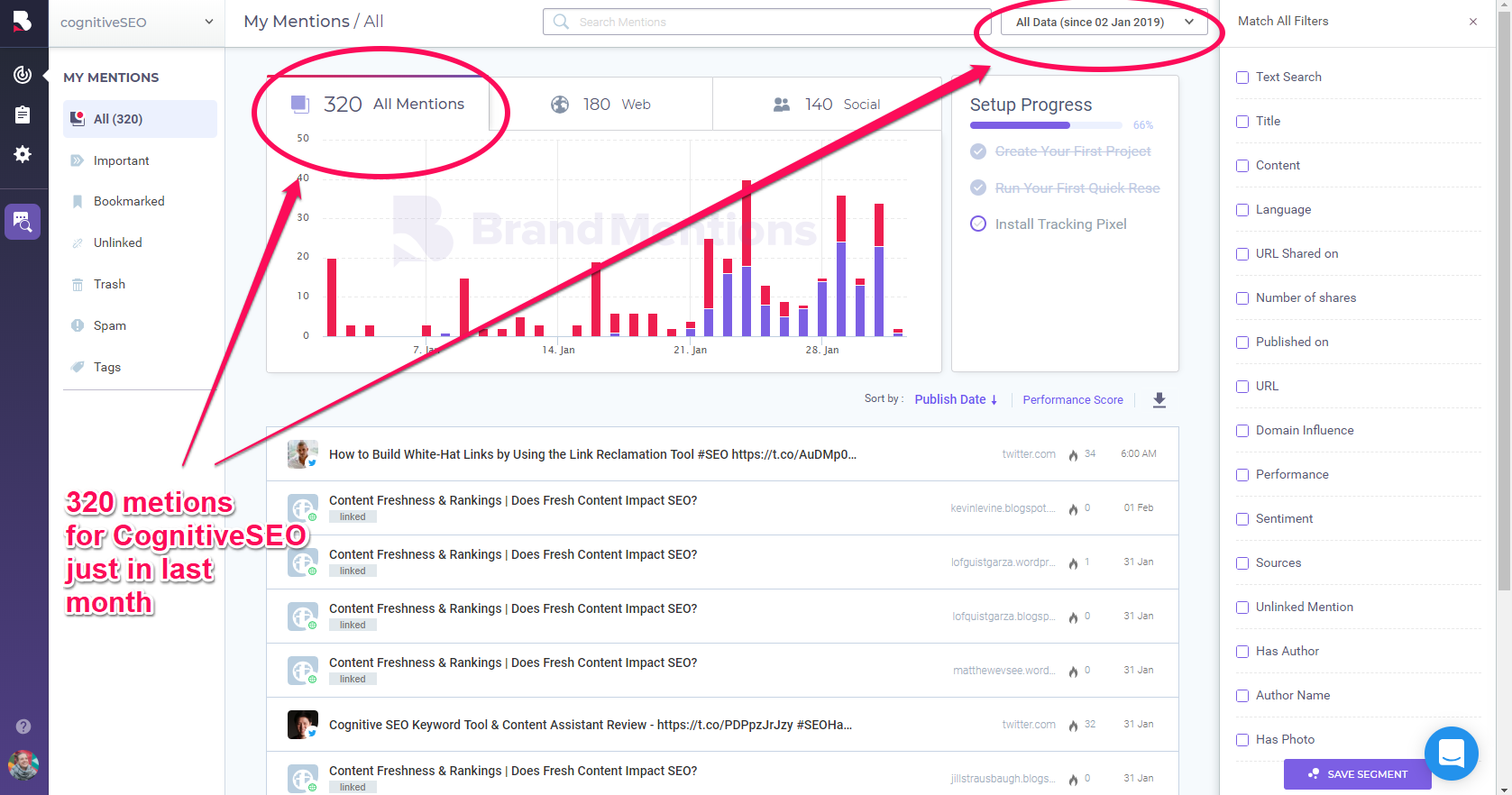
Before deciding to invest go through these 5 reasons Why Brand Monitoring Is a Must and Not a Whim.
2. Be Present on Review Platforms
70% of consumers read 4 or more reviews before trusting a business
Statistics speak for itself. So, even if you're facing reputation issues or not, get some reviews on board. Find the review platforms based on your niche, make your company page and then encourage your clients, collaborators are the whole audience to leave their opinion there. Obviously, you don’t have control over the reviews but you can monitor your digital reputation.
Negative aspects can appear at any time. The good side is that those negative comments are a perfect source of feedback and future improvement. Negative reviews and comments can have a big emotional impact on you, see how you handle it in a most profitable way for Neil Patel's perspective.
Do Not: We personally prohibit you doing fake accounts or paying for reviews. For some companies it might work, but when it doesn't it becomes a disaster. Your brand can be ruined in a glance by your audience that will spread the world that you are a liar and cheater.
3. Check Out the Forums
If there are places where people are talking about you, believe us you want to be there. One of these places is forums. For example, you might hear of Reddit with over 1.66 billion users. There are many of them but you want to get only on those that contain your audience discussing your brand and your niche.
Monitoring tools might help you find them, once you did, follow the discussions, give advice and answer questions. It will raise your authority and visibility of your brand. For example, if we just search cognitiveSEO (a SEO platform) on Quora (a forum on marketing and tech) there are pretty many discussions going on which we would better follow
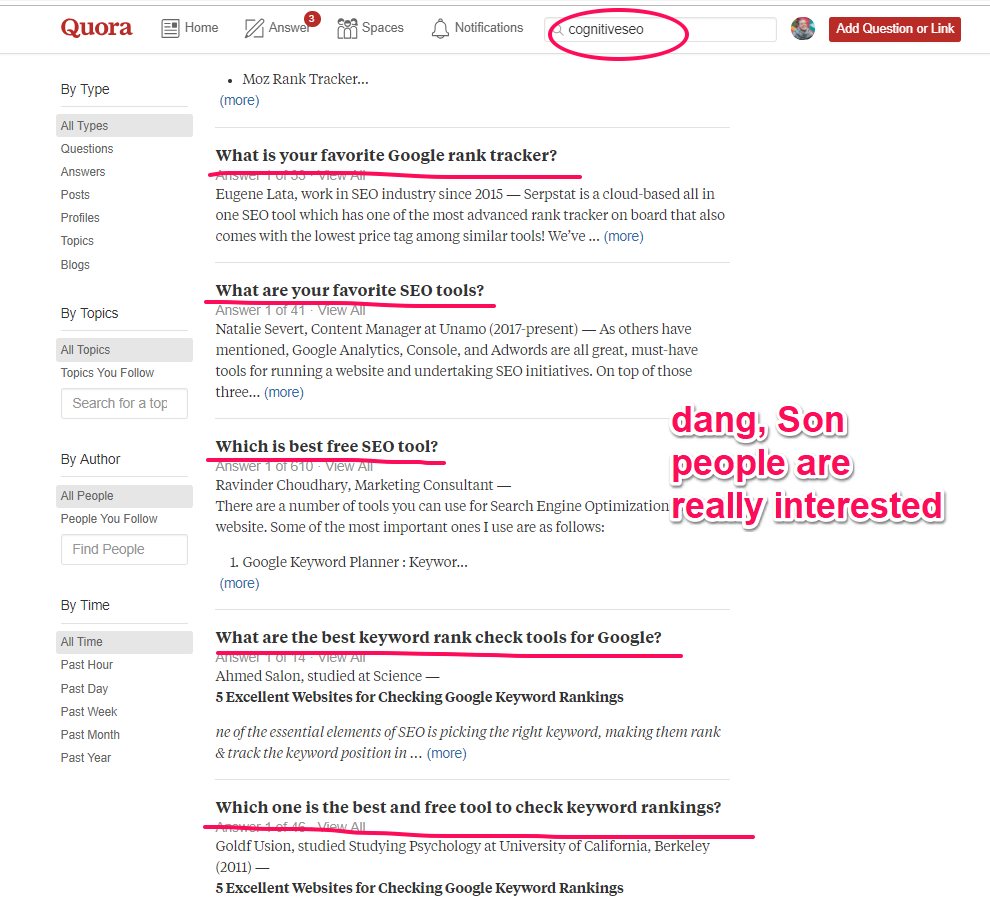
Do Not: Avoid being pushy and loud. Forums are for discussions and not for self-promotion. This mistake might cost you people's trust and access to the platforms.
4. Respond and Interact as Fast as You Can
Stay always available. Especially if you use a monitoring tool you can find out about a comment or a question almost instantly. A fast answer can get you a new customer that is at a store and is waiting for an answer or a mad user that wants to complain to everyone about your product. Anyhow show that you care when your reaction is needed.
Monitoring is useless without social listening. To boost your speed you might want to use a monitoring tool with instant alert, so anytime there is a new mention you receive a notification. Being in Portillo’s restaurant shoes, we would respond to this question immediately.
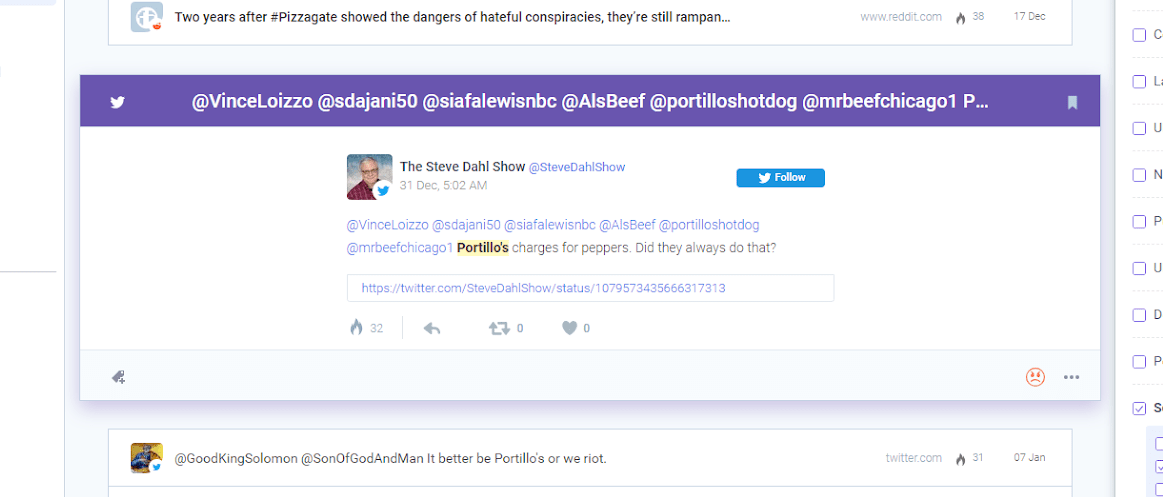
Do Not: Help yourself from ignoring your brand mentions. A small reaction, an apology or a "thank you" is a small effort that will pay you off. Also Don’t lie, if you give advice or a promise then make sure to give the right information or keep that promise.
How to Recover Your Online Reputation
In the age of false information and hate sites that focus on negative comments and reviews, it is very important that your brand name has a strong online presence and that you perform a proper online reputation management. In this part of the triathlon, you get to run as fast as you can to save your reputation.
This practical step is the most difficult one because it involves negative emotions, ethics, and rules. Before going to actions we need to adjust our behavior and strategy depending on the types of negative content:
- minor (comments, posts, tweets) that needs a friendly attitude
- major (reviews, hate sites, media coverage) that can involve violation of rights and radical actions.
In any negative case, we strongly encourage to keep calm, get yourself together and follow our advice to control the situation. Also, nobody is secured from critical situations In this case you have to be even more prepared. That’s why we advise finding some time to research, go through your rights as a brand and what kind of content is illegal. Small introduction:
- Inappropriate language
- False information
- Aims Damaging reputation
So back to actions
In case of minor negative content react immediately using our suggestions:
1. (If Possible) Always Answer
Your attention and ability to face critics will be seen as something positive. So take a small break to calm down then get yourself together and answer that negative mention in a polite manner.
2. Apologize
It is well known that nobody is perfect, same is your brand. If it happened to have a bug or to do a mistake, be brave, apologize and take that information into consideration. By the end of the day, it’s a great source of feedback that helps your brand to update your product and improve your reputation.
3. Involve in Private Discussions
Sometimes emotions can make people too aggressive or can involve some sensible and personal topics. In this case, embrace a more personal approach. Offer that person your time and patience, and invite him to discuss more details in person via mail or messages.
4. Value the Feedback
As mentioned before, treat negative content as a ruff and direct source of feedback. Analyze it, filter it from any emotions and offensive expressions and take what is valuable for your product/service. Then implemented. In case you decide not to implement something, then be ready to get negative mentions on the same topic and answer it politely with prepared arguments. At least we do it that way and it has its results.
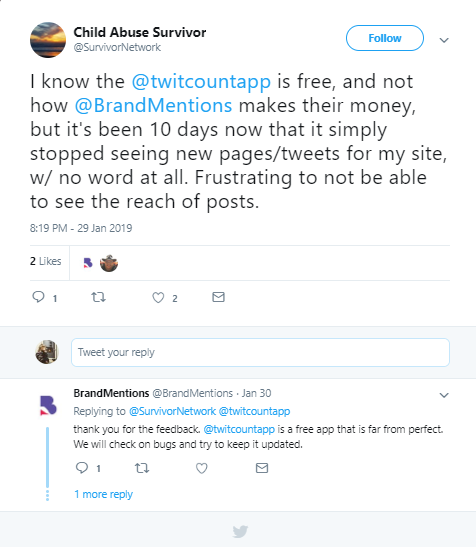
In case of major negative content, things get serious and require more actions that imply some finances and experts.
1. Focus on SEO
Take the first page of Google Search as your business card. If googling your brand name you find negative information about you on the first page, then it’s an alert that you need to invest some money, time and effort into your SEO strategies to rank your site and articles higher than that compromising content.
2. Check on Illegal Content
Always check the negative mentions through “illegal content” filter. If a review violates your brand and offers misinformation, use your right to report a review. If the criticism goes beyond the boundaries, be confident to sue and fight for your right.
Prepare strong arguments, digital proofs, screenshots, demos etc. to demonstrate the slander. Better prevent the disaster because it takes a lot of work to build a reputation and even more to rebuild it because the base [people’s trust] is not so stable anymore. Reporting and suing still affect your brand image so take your time to learn to handle negative mentions on an earlier stage. See this guide on how to deal with negative brand mentions.
3. Online Investigation
Some cases can go far from our abilities to understand and handle, like hacker attacks. The right attitude is still to be transparent, announce the issue and address the problem to experts like reputation management companies that will investigate and solve the situation much faster than you.
In addition, the difference between this triathlon of managing your brand and a normal triathlon is that it never ends, actually, it ends when you stop or give up. In order to resist and overcome all the obstacles, we recommend to analyze your resources and get good equipment. Social listening becomes an important part of a marketing strategy.
“It takes 20 years to build a reputation and five minutes to ruin it. If you think about that, you’ll do things differently.”
Warren Buffet, Chairman and CEO of Berkshire Hathaway
One more aspect to take in consideration is time vs effort. If some effort takes too much time then it’s the moment to optimize the process with appropriate marketing tools. In the case of reputation management, there are many social media and media monitoring tools that offer accurate results, instant alerts, clear reports.
There are free tools like Google Alerts which is less accurate or there are paid tools that pay of on a longer distance of work. BrandMentions is a good example of these tools. You can make use of a free trial to convince yourself of its worth by implementing this guide on reputation management.
Hope that the end of this article is a great start for your brand to build or maintain (hope not recover) its long-lasting, honestly earned reputation.

